|
Size: 2143
Comment:
|
Size: 4311
Comment:
|
| Deletions are marked like this. | Additions are marked like this. |
| Line 1: | Line 1: |
| #acl MartinGade:read,write,delete,revert FEW3OGroup:read,write all:read | ## page was renamed from FEW3O #acl MartinGade:read,write,delete,revert KFEW3OGroup:read,write All:read |
| Line 3: | Line 4: |
| = FEW³O-Gruppe am IfM = Die FEW³O-Gruppe ist Teil der Fernerkundungsgruppe (Prof. Detlef Stammer) am IfM. FEW³O steht für '''Fe'''rnerkundung von '''W'''echsel'''w'''irkungen an der '''W'''asseroberfläche. Mitglieder der Gruppe beschäftigen sich mit Messungen von (Gas-) Austauschprozessen im Labor (Windwellenkanal), mit Feldmessungen der Radarrückstreuung von der Meeresoberfläche oder mit der systematischen Analyse von Satellitenbildern, vor allem von küstennahen Seegebieten. |
#language de = KFEW³O at IfM = KFEW³O stands for '''K'''üsten-'''FE'''rnerkundung und '''W'''echsel'''W'''irkungen an der '''W'''asser'''O'''berfläche (Coastal Remote sensing and Air-Water Interactions). We perform systematic analyses of satellite imagery, particularly of synthetic aperture radar (SAR) imagery of coastal regions, of field campaigns involving measurements of the radar backscattering from the sea surface, and of lab experiments in the University's wind-wave tank. |
| Line 6: | Line 8: |
| === Windwellenkanal === Der Windwellenkanal der Uni Hamburg wurde in den frühen 1970er Jahren gebaut und befindet sich auf dem Gelände der Bundesanstalt für Wasserbau, Außenstelle Küste, in Hamburg-Rissen. |
<<TableOfContents()>> |
| Line 9: | Line 10: |
| Weitere Informationen gibt es auf der [[http://www.ifm.zmaw.de/~wwwrs/WWK/UHH_WWK_main.html|WWK-Homepage]]. | ---- == Satellite Imagery == We are regularly analysing satellite images, particularly those acquired by synthetic aperture radar (SAR) sensors. These high-resolution active microwave sensors are used to derive oceanic processes and phenomena from sea surface roughness variations that manifest in spatial variations of the SAR image intensity. Below is a list of recent and actual studies based on systematic analyses of large numbers of SAR data. |
| Line 11: | Line 14: |
| === Forschungsplattform FINO2 === Seit Juli 2008 finden auf der Forschungsplattform FINO2 in der Westlichen Ostsee systematische Messungen der Radarrückstreuung von der Wasseroberfläche statt. Fest installiert ist dort die Plattformversion des Multi³Scat der Uni Hamburg, mit dem in 5 Radar-Frequenzbändern und 4 Polarisationskombinationen rund um die Uhr Messungen gemacht werden. |
. [[KFEW3O/SARWatt|{{attachment:Sat_TSX.jpg|KFEW3O/SARWatt|height="60"}}]] Sediments and habitats on exposed intertidal flats. Variations in the normalized radar cross section at different radar bands and polarizations can be used to gain information on the distribution of various sediments and on the location of habitats on dry-fallen sandbanks. For more information on our studies performed together with colleagues from Germany and China click [[KFEW3O/SARWatt|here]]. |
| Line 14: | Line 16: |
| Einige Informationen zu FINO2 findet man [[http://www.fino2.de|hier]]. | SAR images are already being used for the operational oil-spill monitoring. These images are used for comprehensive statistical analyses that allow, e.g., an assessment of the mean oil pollution of dedicated coastal regions and its seasonal variability. Such analyses were recently done for Indonesian coastal waters. |
| Line 16: | Line 18: |
| === Satellitenbilder === Regelmäßig werden Satellitenbilder ausgewertet, vor allem solche, die mit einem Synthetik-Apertur-Radar (SAR) aufgenommen wurden. Diese hochauflösenden aktiven Mikrowellensensoren werden genutzt, um aus räumlichen Variationen der Bildintensität auf Rauigkeitsvariationen der Wasseroberfläche und die dafür verantwortlichen hydrodynamischen Phänomene zu schließen. Das wird zum Beispiel genutzt zur Identifikation von Oberflächenfilmen auf dem Meer und zur Klassifikation von trocken gefallenen Wattgebieten (dort ist die Watt- und nicht die Wasseroberfläche Rückstreuer). |
. [[IndoNACE|{{attachment:Sat_Env.jpg|IndoNACE|height="60"}}]] To the wiki pages of the '''statistical analyses''' of oil pollution based on SAR imagery [[IndoNACE|this way]]. |
| Line 19: | Line 20: |
| ==== Satellitenbild-Datenbank ==== Informationen zu sämtlichen zurzeit vorhandenen SAR-Aufnahmen sind in einer [[FEW3O_SatDB|Datenbank]] zusammengefasst. |
SAR images, along with data acquired by other sensors, can be used to detect submesoscale and mesoscale turbulent processes at the water surface and to identify their spatio-temporal variation. Collaborative studies have been performed together with colleagues from the University's Department of Informatics, from Moscow and Ufa, Russia, and from Liège, Belgium. . [[KFEW3O/SAREddies|{{attachment:Sat_S1A.jpg|KFEW3O/SAREddies|height="60"}}]] To the wiki pages of the analyses of '''submeso- and mesoscale phenomena''' using SAR data [[KFEW3O/SAREddies|this way]]. ---- == Wind-Wave Tank == The University's wind-wave tank was built in the early 1970s and is located at the Federal Institute of Waterways Engineering in Hamburg-Rissen. We have been performing measurements of wave damping by monomolecular surface films, of the radar backscattering from the water surface, and of exchange processes across the water-air interface. The wind-wave tank is also used for educational purposes such as practical courses and BSc-/MSc studies. . [[KFEW3O/WWK|{{attachment:WWK_Bild.jpg|KFEW3O/WWK|height="60"}}]] To the wind-wave tank's Wiki pages [[KFEW3O/WWK|this way]]. ---- == Scatterometer == Systematic measurements of the radar backscattering from the sea surface and their analyses contribute to a better understanding of backscattering mechanisms in general and to the development of methods to derive oceanic and atmospheric parameters from such measurements. Lab experiments deploying a scatterometer were performed from the 1980s, and in the 1990s field campaigns were performed in the German Bight of the North Sea, deploying a scatterometer from board a helicopter and from a radar tower, allowing measurements at 5 frequency bands and at 4 polarization combinations. . [[KFEW3O/Multi3ScatFINO2|{{attachment:M3S_FINO.jpg|KFEW3O/Multi3ScatFINO2|height="60"}}]] To the wiki pages of tower-based scatterometer measurements [[KFEW3O/Multi3ScatFINO2|this way]]. ---- == Miscellaneous, Internal Pages == . {{attachment:Grünpfeil.jpg||height=40}} [[KFEW3O/KFEW3O_intern|{{attachment:intern_r.jpg|KFEW3O/KFEW3O_intern|height="40"}}]] ...to the Internal FEW³O pages [[KFEW3O/KFEW3O_intern|this way]]. ---- |
KFEW³O at IfM
KFEW³O stands for Küsten-FErnerkundung und WechselWirkungen an der WasserOberfläche (Coastal Remote sensing and Air-Water Interactions). We perform systematic analyses of satellite imagery, particularly of synthetic aperture radar (SAR) imagery of coastal regions, of field campaigns involving measurements of the radar backscattering from the sea surface, and of lab experiments in the University's wind-wave tank.
Satellite Imagery
We are regularly analysing satellite images, particularly those acquired by synthetic aperture radar (SAR) sensors. These high-resolution active microwave sensors are used to derive oceanic processes and phenomena from sea surface roughness variations that manifest in spatial variations of the SAR image intensity. Below is a list of recent and actual studies based on systematic analyses of large numbers of SAR data.
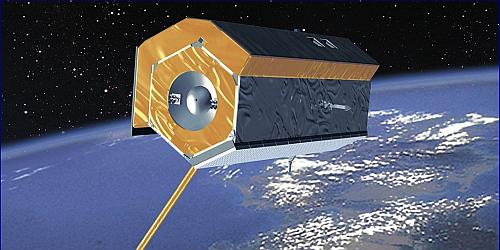 Sediments and habitats on exposed intertidal flats. Variations in the normalized radar cross section at different radar bands and polarizations can be used to gain information on the distribution of various sediments and on the location of habitats on dry-fallen sandbanks. For more information on our studies performed together with colleagues from Germany and China click here.
Sediments and habitats on exposed intertidal flats. Variations in the normalized radar cross section at different radar bands and polarizations can be used to gain information on the distribution of various sediments and on the location of habitats on dry-fallen sandbanks. For more information on our studies performed together with colleagues from Germany and China click here.
SAR images are already being used for the operational oil-spill monitoring. These images are used for comprehensive statistical analyses that allow, e.g., an assessment of the mean oil pollution of dedicated coastal regions and its seasonal variability. Such analyses were recently done for Indonesian coastal waters.
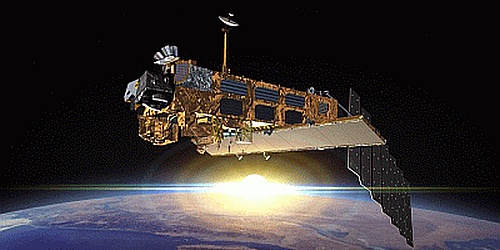 To the wiki pages of the statistical analyses of oil pollution based on SAR imagery this way.
To the wiki pages of the statistical analyses of oil pollution based on SAR imagery this way.
SAR images, along with data acquired by other sensors, can be used to detect submesoscale and mesoscale turbulent processes at the water surface and to identify their spatio-temporal variation. Collaborative studies have been performed together with colleagues from the University's Department of Informatics, from Moscow and Ufa, Russia, and from Liège, Belgium.
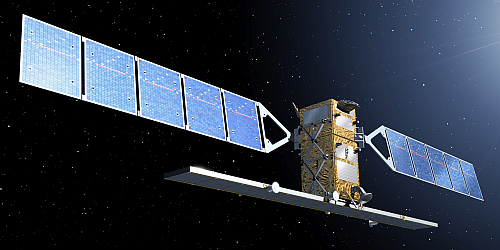 To the wiki pages of the analyses of submeso- and mesoscale phenomena using SAR data this way.
To the wiki pages of the analyses of submeso- and mesoscale phenomena using SAR data this way.
Wind-Wave Tank
The University's wind-wave tank was built in the early 1970s and is located at the Federal Institute of Waterways Engineering in Hamburg-Rissen. We have been performing measurements of wave damping by monomolecular surface films, of the radar backscattering from the water surface, and of exchange processes across the water-air interface. The wind-wave tank is also used for educational purposes such as practical courses and BSc-/MSc studies.
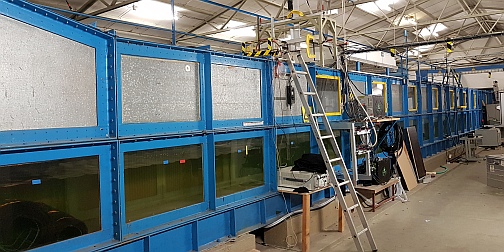 To the wind-wave tank's Wiki pages this way.
To the wind-wave tank's Wiki pages this way.
Scatterometer
Systematic measurements of the radar backscattering from the sea surface and their analyses contribute to a better understanding of backscattering mechanisms in general and to the development of methods to derive oceanic and atmospheric parameters from such measurements. Lab experiments deploying a scatterometer were performed from the 1980s, and in the 1990s field campaigns were performed in the German Bight of the North Sea, deploying a scatterometer from board a helicopter and from a radar tower, allowing measurements at 5 frequency bands and at 4 polarization combinations.
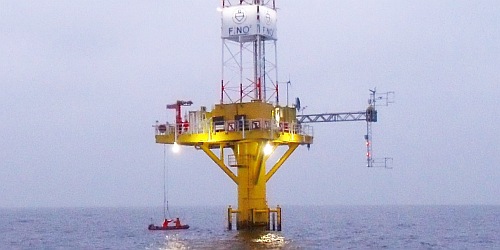 To the wiki pages of tower-based scatterometer measurements this way.
To the wiki pages of tower-based scatterometer measurements this way.
Miscellaneous, Internal Pages

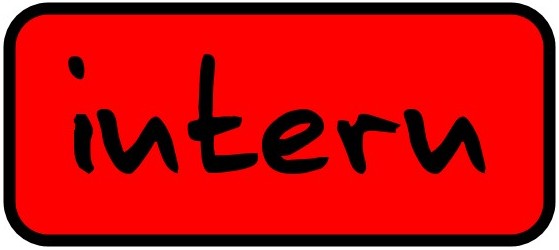 ...to the Internal FEW³O pages this way.
...to the Internal FEW³O pages this way.
